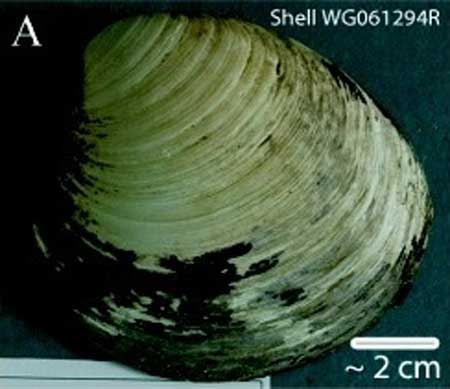Ming the clam is quite possibly the oldest creature who lived in this world, but it ultimately faced an untimely and tragic death. After more than half a millennium in the sea, the animal was captured by scientists, at 507 years old to be precise. Ming the clam was an ocean quahog, with the scientific name “Arctica Islandica”, and before they knew what they had, the scientists studying it killed it.
As the news broke about the accidental death of Ming, headlines criticized the scientists for killing the animal to find out how old it was exactly. But there is more to this story that the headlines.
The Discovery
Ming the clam, a 3.4 inch (8.6cm) long ocean quahog, was reported to have been discovered in the year 2006 in Iceland. A group of researchers from Bangor University in the United Kingdom captured this animal from the deep Icelandic seabed, along with 200 other ocean quahogs. The specimens were taken to the university labs for further studies, as part of the bigger project that was being carried out on climate change.
As per the reports from National Geographic, almost all of the clams which were captured from the Icelandic shelf were killed shortly thereafter. They were then frozen on the research ship for transportation to the labs. On arrival at the university, the researchers started to carry out their study upon these animals, based on their record-breaking age.

The life span of quahogs is known to be amazingly long. Therefore, it was quite common to find some who were over 100 years old. This long lifespan is what draws the interest of scientists, who use them as specimens to study the history of the ocean and the impact of climate change over this extended period.
The Oldest Known Animal
Ocean quahogs are known to add new rings to their shells every living year. The scientists are therefore able to analyze the changes to the ocean waters over time, as evidenced in changes to the shell growth from year to year. And with the continued research, they are able to draw conclusions on how climate change has affected sea life over time.
But in the year 2007, the researchers and the scientists discovered that Ming the clam was not like the other quahogs that were captured back in 2006. The first examination of Ming was carried out by counting the rings over its shell. The results were shocking: around 405-410 rings were counted, which meant the Ming was over four centuries old when he was captured.
Whoops!
The scientists felt their manual counting of the rings was not conclusive, as they had never encountered a quahog this old before. So, to confirm its exact age, they removed the shell and put it under a microscope to confirm the earlier count. So, as well as killing this ancient animal, they also dismembered the remains, and Ming became a tragic collateral casualty of their research.
The actual results after putting the shell of Ming under a microscope proved that it was even older, around 507 years old. It proved that Ming came into existence around the year 1499. When they realized what they had discovered, the scientists claimed they had not intended for Ming to die, but the truth came out soon after and they were forced to admit they had killed the quahog for their research.

The general public reacted very badly to news that the oldest animal ever known had been killed. Emails were shared stating that “The Scientists of Bangor University are Clam Murderers”. Ming the clam was a survivor from the age of Leonardo Da Vinci and Christopher Columbus, and had lived undisturbed through the lives of Abraham Lincoln, Queen Victoria, and much of modern human history. And researchers had just killed it.
Ming may not have lived to its full potential, but its sacrifice to science was not in vain. The studies associated with Ming gave scientists evidence of how oceans have changed over the past centuries. It also helped the scientists to further understand how biological aging works.
The Secret of Immortality?
The secret behind the long lifespan of ocean quahogs lies with their adaptations to live in low oxygen environments. These animals have developed a very slow metabolism, which allows for extraordinary lifespans. These conclusions were presented by Doris Abele, a marine biologist, to Science Nordic in 2013.
James Scourse, a researcher from the Bangor team that killed Ming, sought to defend the research. He pointed out that there may still be older clams in the deep oceans, and that Ming was just the oldest one that has yet been found.
In fact, he concluded that it is very unlikely that Ming was the oldest clam out there, although he was very sad that Ming had been killed during their research. He hoped that Ming’s sacrifice could contribute to a major breakthrough for research in climate change, and its prolonged effect on the ecosystem of this world. He also hopes that older clams will eventually be found, and preserved or left undisturbed.
The Ultimate Loss
Even with the rational explanations provided by the researchers, people were still angry that the researchers and scientists had cut short the life span of such an old, yet healthy, animal. And what made them more furious is that the death was just for the sake of running experiments. People believed that the scientists should have chosen less destructive options in their work, but that this approach was easier, never mind the cost.
Rest in peace, Ming the clam.
Top Image: Ming the Clam had been in the ocean for over a hundred years before the Mayflower sailed to the New World. Source: febb / CC BY-SA 3.0.
By Bipin Dimri